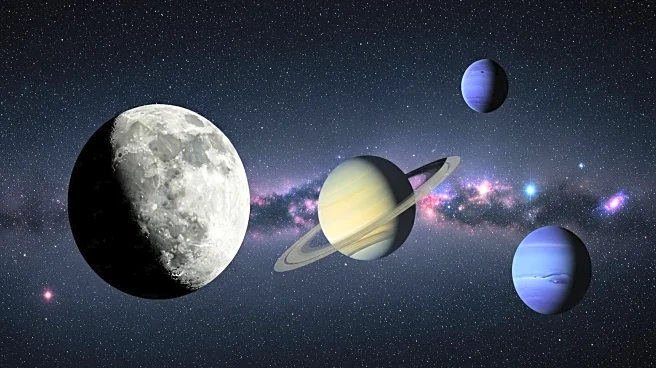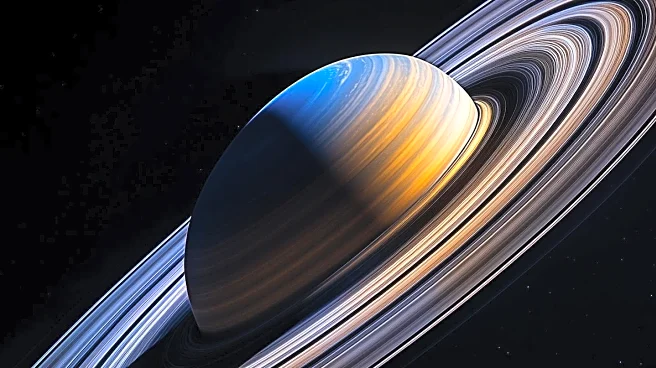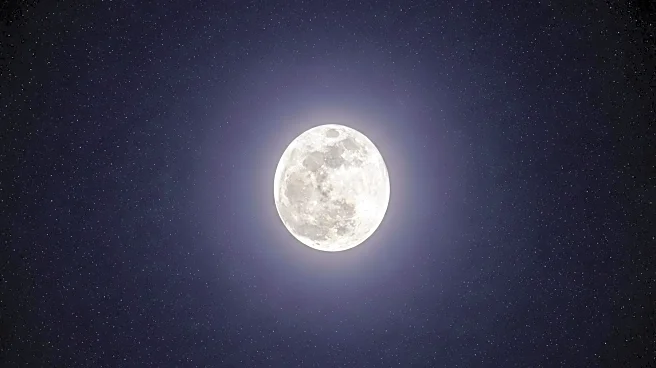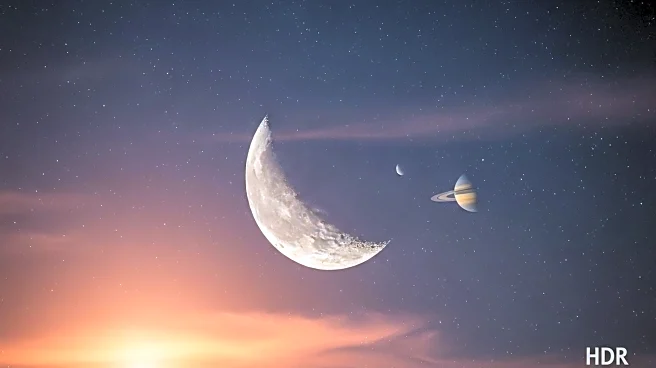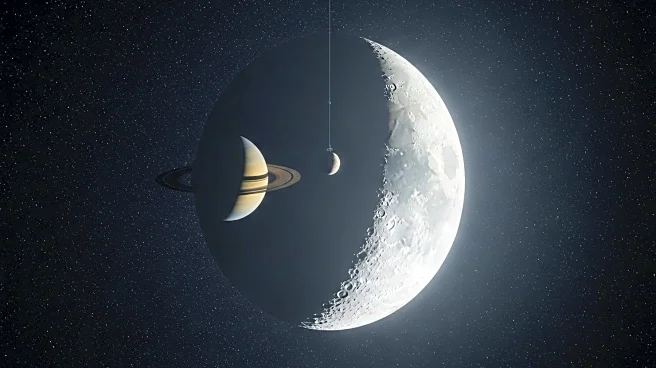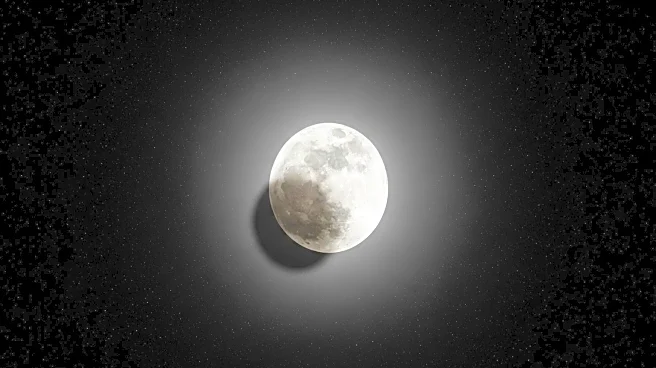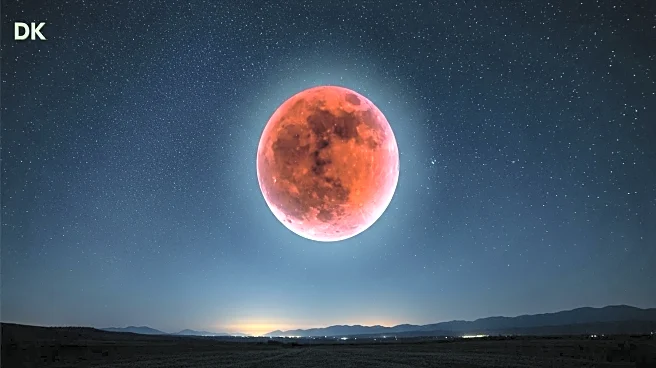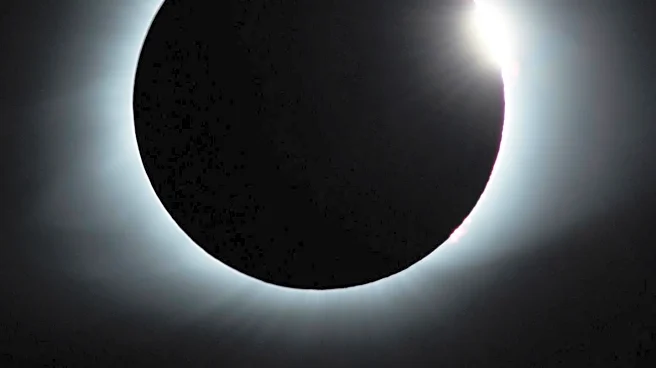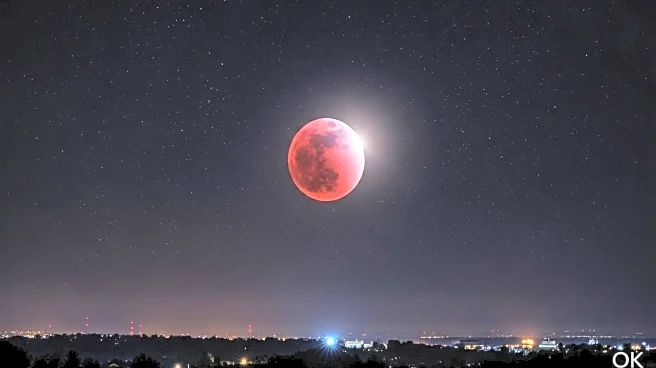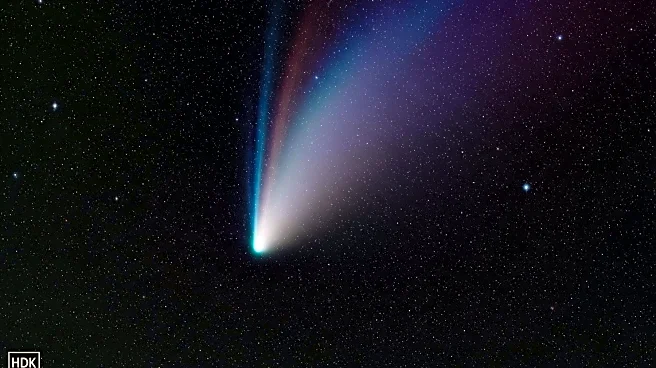What's Happening?
On September 8, 2025, the Moon passed close to Saturn and Neptune, creating a notable celestial event. Saturn, visible to the naked eye, and Neptune, requiring optical aid, were observable in the constellation Pisces. The Moon passed 4° north of Saturn at 4 PM EDT and 3° north of Neptune at 6 PM EDT. Saturn's disk measured 19” with rings spanning 44” along the long axis, while Neptune appeared 2” across. Both planets were visible in the southeastern sky by 11 PM local daylight time. Neptune is approaching opposition on September 23, shortly after Saturn's opposition.
Why It's Important?
This celestial event provides an opportunity for astronomers and sky enthusiasts to observe the dynamics of planetary movements and alignments. Saturn's visibility without optical aid makes it accessible to the general public, while Neptune's proximity to Saturn offers a chance for more detailed observation with telescopes. Such events can enhance public interest in astronomy and provide educational opportunities about planetary positions and their significance in the solar system.
What's Next?
Neptune will reach opposition on September 23, following Saturn's opposition. This will allow for optimal viewing conditions as both planets will be closest to Earth and fully illuminated by the Sun. Astronomers and enthusiasts can expect clearer views and potentially gather more data on these planets during this period.
